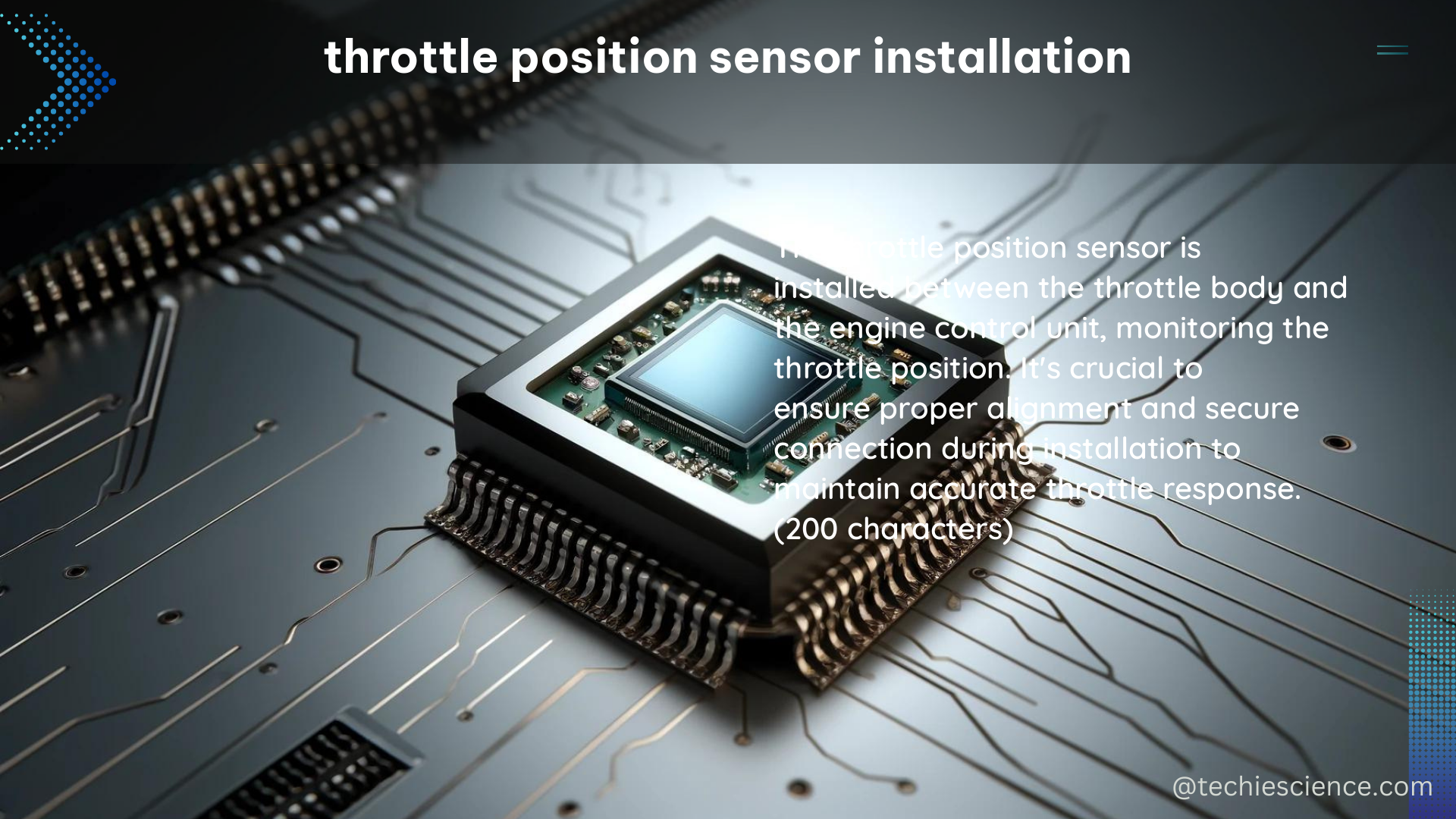The throttle position sensor (TPS) is a critical component in modern vehicles, providing the engine control unit (ECU) with real-time feedback on the position of the throttle valve. This information is essential for the ECU to precisely control fuel injection, ignition timing, and other engine functions, ensuring optimal performance and emissions control. Proper installation of the TPS is crucial for the overall health and efficiency of your vehicle’s engine.
Technical Specifications of Throttle Position Sensors
- Sensor Type:
- Potentiometer-type sensors: These sensors measure the throttle position by converting the mechanical position of the throttle into an electrical signal.
-
Hall-effect sensors: These sensors use a magnetic field to detect the throttle position.
-
Voltage Range:
-
The TPS typically has a voltage range of 0-5 volts, with 0 volts representing the closed throttle position and 5 volts representing the wide-open throttle position.
-
Accuracy:
-
The TPS should have an accuracy of ±1% of the full scale, ensuring that the ECU receives precise and reliable information about the throttle position.
-
Response Time:
-
The TPS should have a fast response time, typically less than 10 milliseconds, to enable the ECU to respond quickly to changes in the throttle position.
-
Operating Environment:
-
The TPS should be able to operate over a wide temperature range, typically from -40°C to +125°C, and should be resistant to vibration and shock.
-
Durability:
-
The TPS should be designed to withstand the harsh operating conditions of the engine compartment, including exposure to heat, moisture, and contaminants, to ensure long-term reliability.
-
Compatibility:
- The TPS should be specifically designed and manufactured for the make, model, and year of your vehicle to ensure a perfect fit and proper integration with the ECU.
Step-by-Step Guide to Throttle Position Sensor Installation

- Locate the TPS:
-
The TPS is typically located on the throttle body, near the throttle shaft.
-
Disconnect the Electrical Connector:
-
Before removing the TPS, disconnect the electrical connector from the sensor to avoid any potential damage.
-
Remove the Old TPS:
-
Locate and remove the screws or bolts that hold the TPS in place, then carefully pull the sensor out of the throttle body.
-
Install the New TPS:
- Carefully align the new TPS with the throttle shaft and secure it in place using the appropriate screws or bolts.
-
Ensure that the TPS is properly seated and aligned to ensure accurate throttle position sensing.
-
Connect the Electrical Connector:
-
Reconnect the electrical connector to the new TPS, making sure that it is securely seated and locked in place.
-
Test the TPS:
- Start the engine and use a scan tool or multimeter to verify that the TPS is working correctly.
-
The voltage should increase smoothly as the throttle is opened, and the readings should be within the manufacturer’s specified range.
-
Calibrate the TPS:
- Some vehicles may require the TPS to be calibrated or “learned” by the ECU to ensure optimal performance.
-
Refer to your vehicle’s service manual or consult a professional technician for the proper calibration procedure.
-
Verify Proper Operation:
- After installation and calibration, test the vehicle’s performance to ensure that the TPS is functioning correctly and that the engine is operating at its optimal efficiency.
Troubleshooting Common TPS Issues
- Erratic or Fluctuating Readings:
- This may indicate a faulty TPS or a problem with the electrical connections.
-
Check the TPS wiring for any damage or loose connections, and replace the TPS if necessary.
-
Stuck or Unresponsive Throttle:
- This could be caused by a malfunctioning TPS or a mechanical issue with the throttle linkage.
-
Inspect the TPS and the throttle assembly for any signs of wear or damage, and replace the affected components as needed.
-
Check Engine Light Illumination:
- If the ECU detects an issue with the TPS, it will typically trigger a diagnostic trouble code and illuminate the check engine light.
-
Use a scan tool to read the code and diagnose the problem, then address the underlying issue.
-
Poor Fuel Economy or Engine Performance:
- A faulty TPS can cause the ECU to receive inaccurate throttle position data, leading to suboptimal fuel injection and ignition timing.
- If you notice a decline in fuel efficiency or engine performance, have the TPS inspected and replaced if necessary.
By following these comprehensive guidelines and addressing any TPS-related issues promptly, you can ensure the optimal performance and longevity of your vehicle’s engine.
References:
- HELLA – Check and change ABS and wheel speed sensors
- DEPARTMENT OF DEFENSE STANDARD PRACTICE – CADE
- Event Recorders for Rail Rapid Transit Systems
- Sensor Technology Handbook – OLLINTEC
- CONTROL VALVE HANDBOOK | Emerson

The lambdageeks.com Core SME Team is a group of experienced subject matter experts from diverse scientific and technical fields including Physics, Chemistry, Technology,Electronics & Electrical Engineering, Automotive, Mechanical Engineering. Our team collaborates to create high-quality, well-researched articles on a wide range of science and technology topics for the lambdageeks.com website.
All Our Senior SME are having more than 7 Years of experience in the respective fields . They are either Working Industry Professionals or assocaited With different Universities. Refer Our Authors Page to get to know About our Core SMEs.